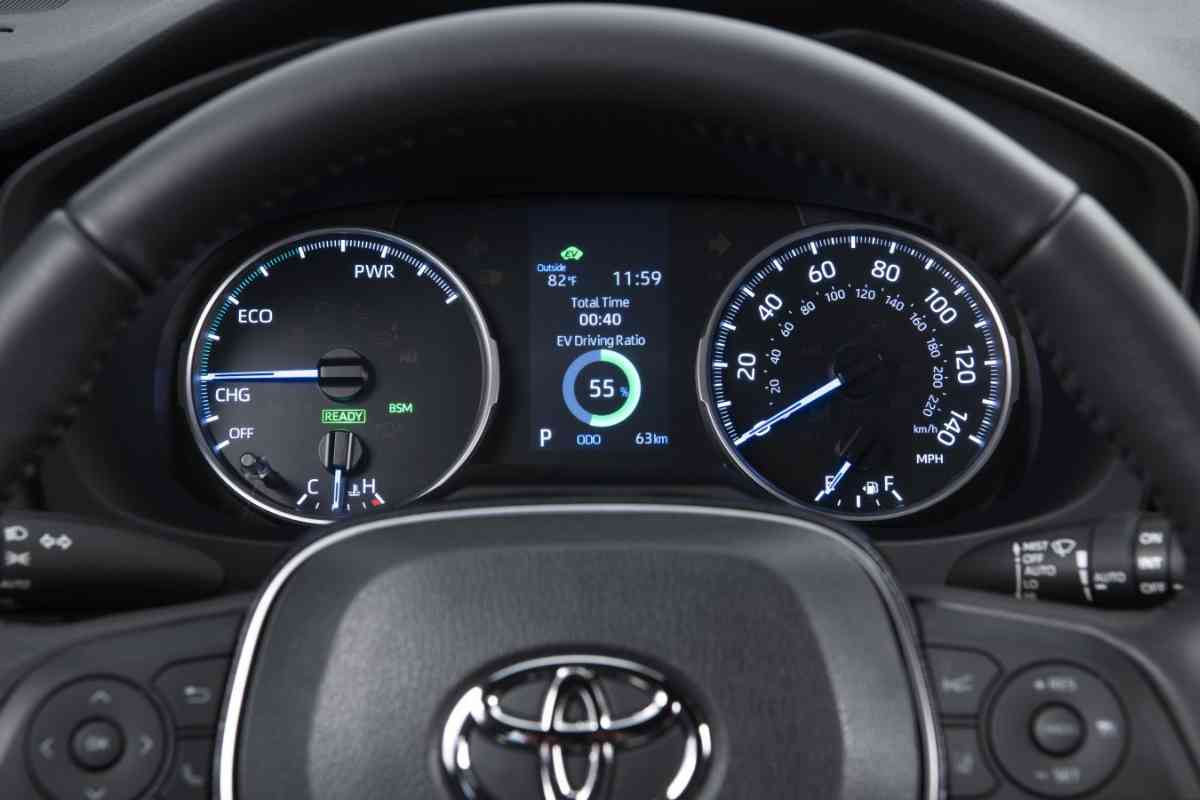Toyota RAV4 Check Engine Light, VSC, and 4WD On: Troubleshooting Tips
Seeing the check engine light (CEL), vehicle stability control (VSC) light, and 4-wheel drive (4WD) indicator all light up on your Toyota RAV4’s dashboard can be a bit alarming. These indicators are vital signs of your SUV’s health, with each one pointing to different system statuses.

Related Post! Why Your RAV4 4WD Light Stays On
Why Is My Toyota RAV4 Check Engine Light, VSC, and 4WD On?
Your Toyota RAV4’s Check Engine Light, VSC, and 4WD indicators could be on due to a range of issues from a loose gas cap, faulty oxygen sensor, or problems with the anti-lock braking system to more complex concerns in the vehicle’s emissions, stability, or four-wheel-drive systems, signaling the need for a professional diagnostic check.
The CEL could hint at minor to serious concerns within your engine or emissions system, whereas the VSC and 4WD lights are more focused on the vehicle’s stability and traction control systems.
Grasping the significance of each light can not only save you time but also help avert possible safety risks. The VSC light, for example, alerts you to potential issues in the traction control system, crucial for keeping your vehicle stable. Meanwhile, the 4WD indicator could signal problems affecting how your RAV4 handles low-traction environments. Encountering these lights can often mean it’s time to consult a professional.
From experience, addressing these alerts quickly can be key to safeguarding both your vehicle’s durability and your safety. Solutions can range from tightening a loose gas cap to more intricate repairs. Regular upkeep and responsiveness to your RAV4’s alerts are essential for maintaining optimal system functionality. Prompt action upon noticing these lights can help avoid more severe, expensive issues later on.
Deciphering Your Dashboard Alerts
Understanding your Toyota RAV4’s dashboard warnings is crucial. The CEL, VSC, and 4WD lights each communicate vital information about your vehicle’s condition, and recognizing their meanings is the first step in addressing any problems efficiently.

Related Post! The Toyota RAV4 Hybrid Years To Avoid
The Check Engine Light’s Message
This all-encompassing alert suggests potential issues with your RAV4, from minor fixes like securing a gas cap to significant engine troubles. Utilizing a code scanner or consulting with a mechanic is advisable to accurately identify and address the problem.
The Vehicle Stability Control (VSC) System Explained
The VSC system in your RAV4 is designed to aid in preventing skids and maintaining traction in sudden maneuvers or slick conditions. An illuminated VSC light means there’s a glitch in this critical safety feature, emphasizing the importance of this system in ensuring control during challenging driving situations.
Understanding the 4WD Indicator
The 4WD light signifies the operation status of your RAV4’s four-wheel-drive system, crucial for optimal performance in conditions like mud or snow. If this light remains on, it indicates a problem within the 4WD system, suggesting the need for a check-up to ensure your vehicle’s readiness for low-traction environments.
Related Post! How Do I Know If My RAV4 Is In 4WD?
Diagnostic and Troubleshooting

Grasping the reasons behind the Check Engine Light (CEL), Vehicle Stability Control (VSC), and 4-Wheel Drive (4WD) indicators lighting up on your Toyota RAV4’s dashboard is pivotal for ensuring both the performance and safety of your vehicle. This guide will walk you through the common triggers, initial checks you can perform, and when to leverage professional diagnostic tools.
Unraveling the Mystery Behind Dashboard Alerts
The dashboard lights of your RAV4 serve as early warning signals for various issues:
- A CEL might illuminate due to something as simple as a loose gas cap affecting emissions, or it could indicate more significant problems like a faulty oxygen sensor or catalytic converter malfunction.
- The VSC light usually flags issues within the anti-lock braking or traction control systems, essential for vehicle stability.
- An active 4WD light can hint at a spectrum of concerns, from electronic glitches to mechanical faults in the vehicle’s four-wheel-drive system.
Embarking on Initial Diagnostic Steps
Before diving into more complex diagnostics, begin with straightforward checks:
- Ensure the gas cap is tight: An improperly sealed gas cap is a common and easily fixable cause.
- Consult the owner’s manual: Gain insight into what specific indicators mean for your RAV4.
- Look for simple fixes: Some issues, like replacing a worn gas cap or air filter, can be quickly addressed without professional help.
Leveraging Professional Diagnostic Tools
For issues that aren’t immediately apparent or within your capability to resolve, professional diagnostic equipment becomes invaluable. These advanced tools can pinpoint specific trouble codes linked to the warning lights on your dashboard, guiding technicians to the root of the problem efficiently. When facing more complex challenges, it’s prudent to turn to a trusted mechanic equipped with the right technology to diagnose and rectify the issue.
Acknowledging these dashboard indicators is key to proactive vehicle maintenance. By taking the right steps towards diagnosing and addressing the causes behind these lights, you ensure your RAV4 remains a safe and reliable companion on your travels, potentially averting more severe, expensive repairs in the future.
Related Post! What Is The RAV4 Downhill Assist Feature?

FAQs About Toyota RAV4 Dashboard Warning Lights
What should I do first if my Check Engine Light comes on?
Initially, check for simple causes like ensuring the gas cap is tightly secured. If the light remains on, consider using an OBD-II scanner for a preliminary diagnosis or consult a professional mechanic.
Can I drive my RAV4 if the VSC and 4WD lights are on?
While your vehicle may still be operable, it’s important to address these warnings promptly as they relate to your vehicle’s stability and traction control systems, which are crucial for safe driving, especially in adverse conditions.
How urgent is it to service my RAV4 when these lights come on?
It’s advisable to diagnose and address the issue as soon as possible. While some causes may be minor, others can indicate serious problems that could affect your vehicle’s performance and safety.
Are these repairs typically expensive?
Repair costs can vary widely based on the underlying issue. Simple fixes like tightening a gas cap are inexpensive, whereas more complex repairs, such as replacing a faulty oxygen sensor or transmission issues, can be more costly.
Can I diagnose these issues myself?
For basic troubleshooting, such as checking the gas cap or using an OBD-II scanner, yes. However, for more accurate diagnosis and repairs, especially related to the VSC and 4WD systems, professional assistance is recommended.
How can I prevent these lights from coming on?
Regular maintenance and timely addressing of any vehicle issues are key. Follow your RAV4’s maintenance schedule, and promptly attend to any dashboard warnings to help prevent potential problems.
